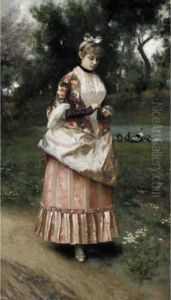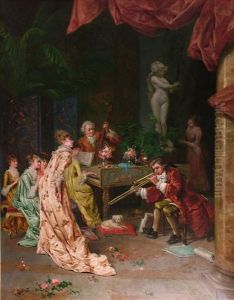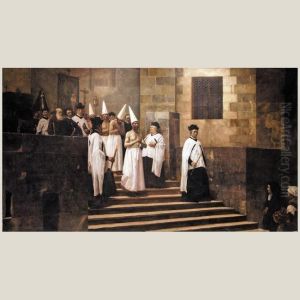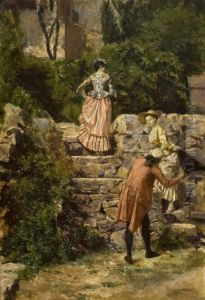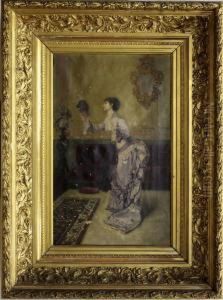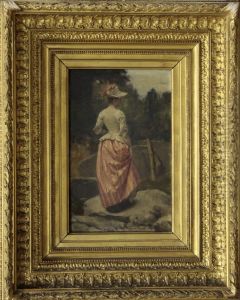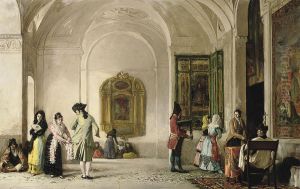Enrique Melida Y Alinari Paintings
Enrique Melida y Alinari was a Spanish painter, born in 1838 in Madrid, Spain. He was a prominent figure in the art scene of the 19th century in Spain and was known for his historical and religious paintings, as well as for his work as an art critic and writer. Melida's artistic journey began at the Royal Academy of Fine Arts of San Fernando in Madrid, where he trained under the guidance of esteemed artists of the time.
Melida's style was deeply influenced by the Romantic movement, which was prevalent during his formative years as an artist. He often depicted dramatic scenes and was known for his use of rich colors and detailed compositions. His works often conveyed a sense of emotion and pathos, characteristic of Romanticism, and he was adept at capturing the interplay of light and shadow, which added a dramatic effect to his paintings.
Though he is not as widely recognized today as some of his contemporaries, Melida made significant contributions to the cultural life of Spain through both his art and his writings. He was also involved in the decoration of several important buildings in Madrid, including the Church of San Francisco el Grande and the Palace of the Senate. In addition to his paintings, Melida wrote on art theory and criticism, contributing to the intellectual discourse on art in Spain during the latter half of the 19th century.
Enrique Melida y Alinari's career was marked by his dedication to the arts, both as a practitioner and as a commentator. Unfortunately, his life was relatively short, as he passed away in 1892 at the age of 54. Despite his early death, Melida's works continue to be respected by art historians and are included in the collections of various Spanish museums, serving as a testament to his skill and passion for the visual arts.
